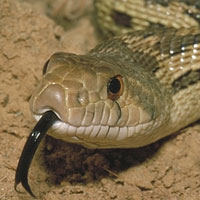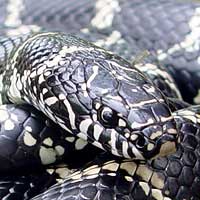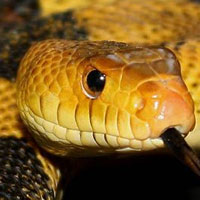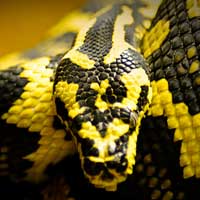The Ultimate Guide to Understanding the Asp Viper
The Asp Viper (Vipera aspis) belongs to the Viperidae snake family, characterized by its venomous nature, triangular head, and role as an ambush predator in European ecosystems.
Scientific Name: Vipera aspis
Snake Family: Viperidae
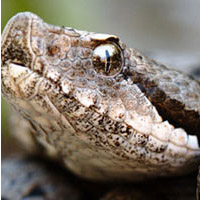
What Makes the Asp Viper Unique?
The Asp Viper, scientifically known as Vipera aspis, is a venomous snake native to parts of Europe, primarily found in France, Italy, and Switzerland. Known for its slender body, triangular head, and distinctive markings, this snake plays a vital role in its ecosystem by controlling rodent populations. However, its venomous nature demands respect and caution, making it a subject of fascination for snake enthusiasts and researchers alike.
Where Does the Asp Viper Thrive?
The Asp Viper is typically found in a range of habitats, including rocky hillsides, grasslands, and forested areas. This adaptable snake prefers environments with ample sun exposure and hiding spots, such as rock crevices or dense vegetation. Here's a breakdown of its habitat preferences:
- Altitude: Found from sea level up to 2,500 meters.
- Climate: Prefers temperate regions with warm summers.
- Geographic Range: Found predominantly in France, Italy, Switzerland, and parts of the Balkans.
| Habitat Feature | Details |
|---|---|
| Preferred Terrain | Rocky areas and grasslands |
| Temperature Range | 15°C - 30°C |
Understanding the Asp Viper’s Diet
The Asp Viper is a carnivorous predator that primarily preys on small mammals, birds, and occasionally reptiles. It relies on its venom to immobilize prey before consuming it. Its feeding habits include:
- Primary Prey: Rodents such as mice and voles.
- Occasional Prey: Small birds and lizards.
- Hunting Style: Ambush predator, using camouflage and patience.
This snake typically consumes prey once every 7-10 days, depending on its size and environmental conditions.
How Does the Asp Viper Behave?
The Asp Viper is known for its reclusive and defensive nature. While it avoids confrontation, it will strike if threatened. Key behavioral traits include:
- Activity: Diurnal during cooler months and nocturnal in summer.
- Social Behavior: Solitary except during mating season.
- Defense Mechanisms: Camouflage, hissing, and striking when provoked.
Understanding its behavior is crucial for ensuring safety and respecting its role in nature.
Health and Lifespan of the Asp Viper
The Asp Viper has a lifespan of 10-15 years in the wild, provided it avoids predation and environmental hazards. Common health concerns include parasitic infections and injuries from predators. Key points about its health:
- Predators: Birds of prey and larger mammals.
- Common Diseases: Mite infestations and respiratory infections.
- Lifespan: 10-15 years in the wild, longer in captivity.
The Asp Viper’s Reproductive Cycle
The Asp Viper's mating season occurs in spring, with females giving birth to live young in late summer. Reproductive traits include:
- Gestation Period: 3-4 months.
- Litter Size: 5-12 young.
- Birthing Method: Ovoviviparous, meaning the young are born live.
Handling and Care Tips for Asp Vipers
Handling venomous snakes like the Asp Viper should only be undertaken by trained professionals. Here are some key safety tips:
- Always use appropriate tools, such as snake hooks.
- Wear protective gear, including gloves and boots.
- Keep the snake in a secure and escape-proof enclosure.
Disclaimer
The information provided in this article is for educational purposes only. SnakeEstate strongly advises against handling or interacting with venomous snakes unless you are a trained and licensed professional. Venomous snakes pose significant risks, and improper handling can result in severe injury or death. Always consult with experts and follow local laws and regulations regarding venomous snake ownership and management.
Other Snakes In This Species
 Asp Viper
Asp Viper Black Mamba
Black Mamba Boomslang
Boomslang Brazilian Coral Snake
Brazilian Coral Snake Bushmaster
Bushmaster Coastal Taipan
Coastal Taipan Common Death Adder
Common Death Adder Common European Adder
Common European Adder Copperhead
Copperhead Coral Snake
Coral Snake Cottonmouth
Cottonmouth Eastern Brown Snake
Eastern Brown Snake Eastern Diamondback Rattlesnake
Eastern Diamondback Rattlesnake Egyptian Cobra
Egyptian Cobra Fer-de-lance
Fer-de-lance Forest Cobra
Forest Cobra Indian Cobra
Indian Cobra Inland Taipan
Inland Taipan Jameson’s Mamba
Jameson’s Mamba King Cobra
King Cobra Lancehead
Lancehead Lataste’s Viper
Lataste’s Viper Malayan Krait
Malayan Krait Mojave Rattlesnake
Mojave Rattlesnake New Guinea Small-eyed Snake
New Guinea Small-eyed Snake Nose-horned Viper
Nose-horned Viper Puff Adder
Puff Adder Russell’s Viper
Russell’s Viper Saw-scaled Viper
Saw-scaled Viper Solomon Island Coral Snake
Solomon Island Coral Snake South American Rattlesnake
South American Rattlesnake Tiger Snake
Tiger Snake Western Diamondback Rattlesnake
Western Diamondback Rattlesnake



